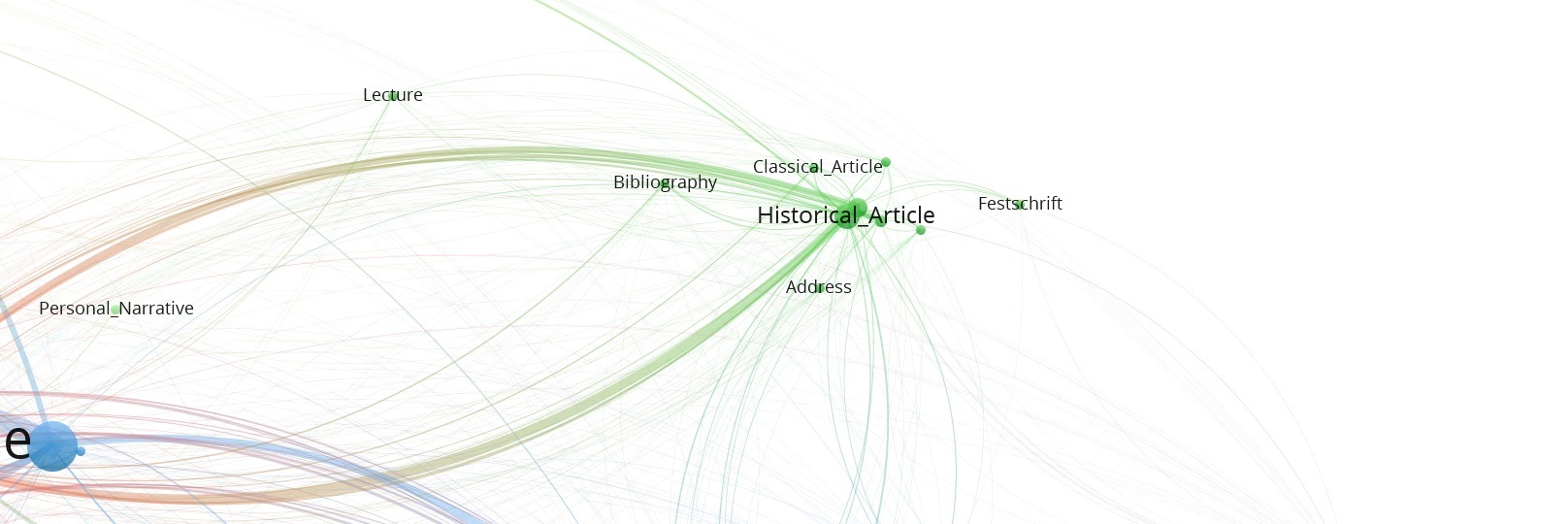Map of Documents
A co-occurrence map
I used a so-called “map of science” to illustrate various parts of this page. It is based on real metadata about biomedical publications!
As every other scientific discipline, biomedical researchers use different publication types to write down and communicate their findings. For example, you can publish your results as a book, a journal article or in a newspaper. These “publication types” are assigned to each study by the PubMed database which includes over 30 million publications. Often, a publication is not clearly classifiable and is assigned multiple types at once, so we can map the co-occurrences of different types:
 (doi: 10.13140/RG.2.2.15217.10081 source)
(doi: 10.13140/RG.2.2.15217.10081 source)
What does that mean? The bigger the bubble, the more often a type is assigned. So most researchers seem to favour publishing traditional journal articles or reviews. Types which co-occurr frequently are clustered close by and colored similarly. This means that they are often assigned to the same publication so that these types are similar, related or depend in each other. Reviews, systematic reviews and meta-analysis (yellow cluster) are all secondary genres that are solely based on the aggregation of previous research. The same accounts for Historical articles, Addresses and Festschriften (green cluster).
Why publication types?
What is so special about them and why are similarities interesting? In fact, I dedicate most of my research towards these questions. Consider the following points:
- different document (types) serve different functions in society Not only in academia, but also in general. Just think about law texts, user manuals or newspaper articles! Documents are not only used to transport text. Often they make us do things or act in certain ways. For example, review articles attempt to capture and synthesize vast amounts of primary research to tell us what has been researched and what still needs to be investigated.
- Documents have authors. And some authors favour certain types over others. Almost all researchers write PhD theses but Festschriften and Addresses represent seniority and eminence. Some types are related to very specific types of studies and require authors to specialize and even build their careers upon them.
- Document types change. Many of the types in the map stem from the dominance of academic periodicals in the history of science. Internet-era and Open Science will change this dramatically! Understanding the deveopment and usage of certain types supports our understanding of how the scientific system might change. For example, new document types such as datasets or codebooks accompany new roles like research data sepcialists or software developers. Studying the document types helps us to understand these new roles.
(updated on 08.12.2023)